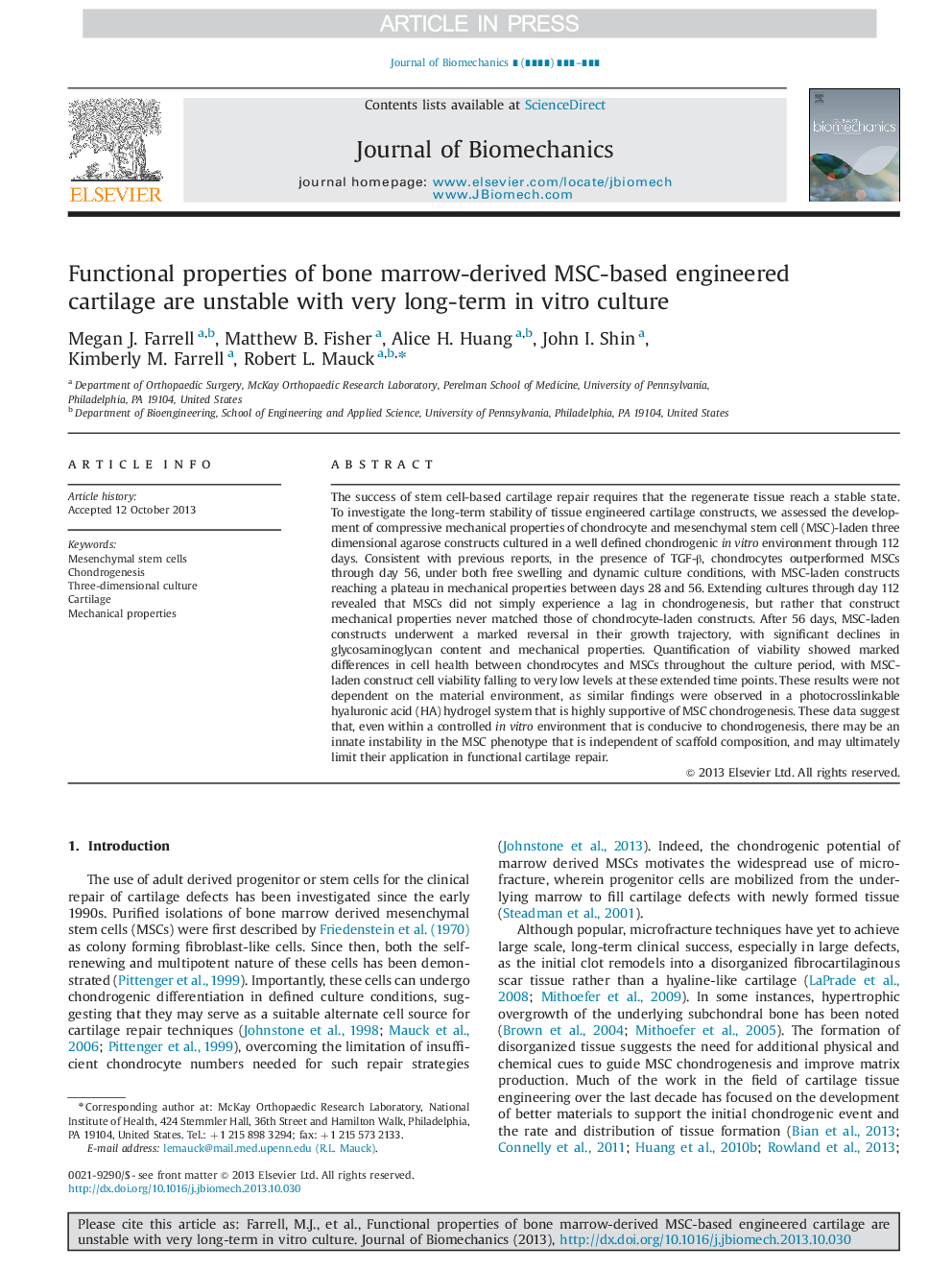| Article ID | Journal | Published Year | Pages | File Type |
|---|---|---|---|---|
| 10432081 | Journal of Biomechanics | 2014 | 10 Pages |
Abstract
The success of stem cell-based cartilage repair requires that the regenerate tissue reach a stable state. To investigate the long-term stability of tissue engineered cartilage constructs, we assessed the development of compressive mechanical properties of chondrocyte and mesenchymal stem cell (MSC)-laden three dimensional agarose constructs cultured in a well defined chondrogenic in vitro environment through 112 days. Consistent with previous reports, in the presence of TGF-β, chondrocytes outperformed MSCs through day 56, under both free swelling and dynamic culture conditions, with MSC-laden constructs reaching a plateau in mechanical properties between days 28 and 56. Extending cultures through day 112 revealed that MSCs did not simply experience a lag in chondrogenesis, but rather that construct mechanical properties never matched those of chondrocyte-laden constructs. After 56 days, MSC-laden constructs underwent a marked reversal in their growth trajectory, with significant declines in glycosaminoglycan content and mechanical properties. Quantification of viability showed marked differences in cell health between chondrocytes and MSCs throughout the culture period, with MSC-laden construct cell viability falling to very low levels at these extended time points. These results were not dependent on the material environment, as similar findings were observed in a photocrosslinkable hyaluronic acid (HA) hydrogel system that is highly supportive of MSC chondrogenesis. These data suggest that, even within a controlled in vitro environment that is conducive to chondrogenesis, there may be an innate instability in the MSC phenotype that is independent of scaffold composition, and may ultimately limit their application in functional cartilage repair.
Keywords
Related Topics
Physical Sciences and Engineering
Engineering
Biomedical Engineering
Authors
Megan J. Farrell, Matthew B. Fisher, Alice H. Huang, John I. Shin, Kimberly M. Farrell, Robert L. Mauck,
